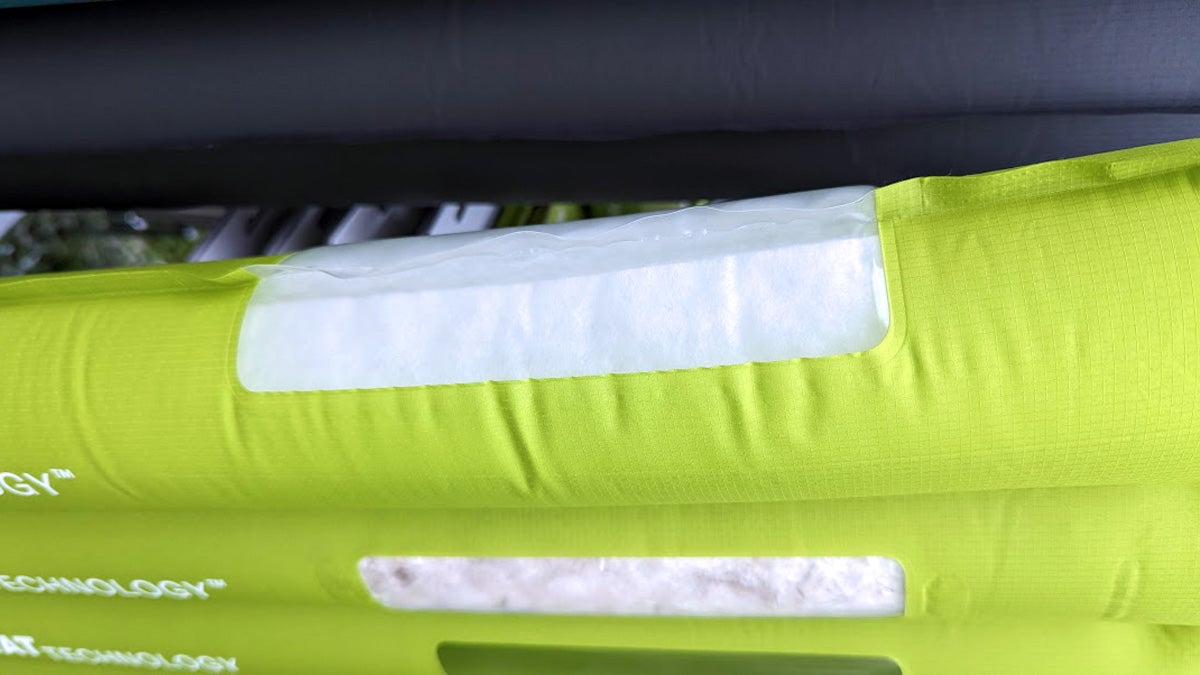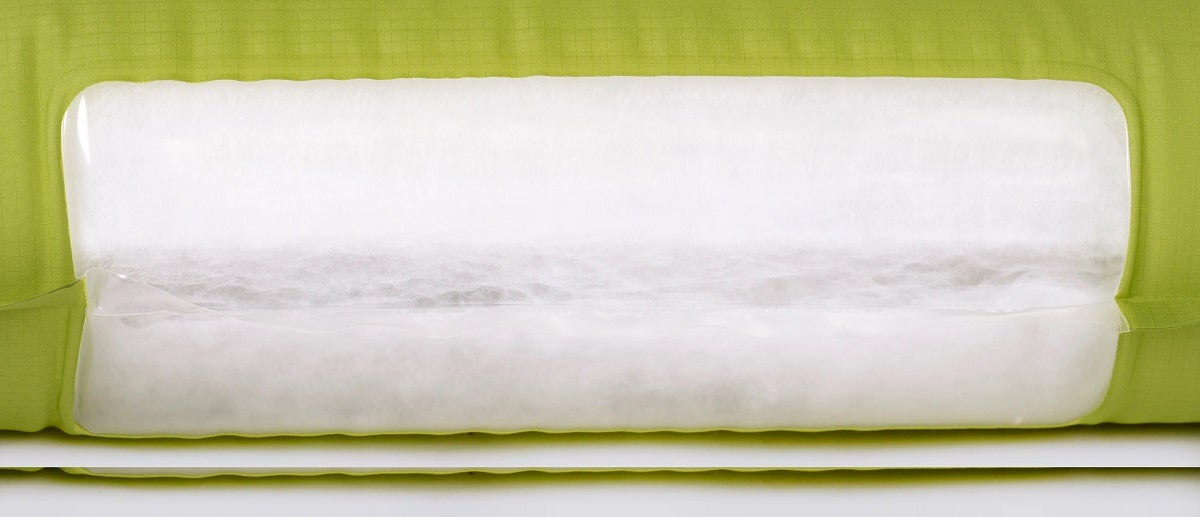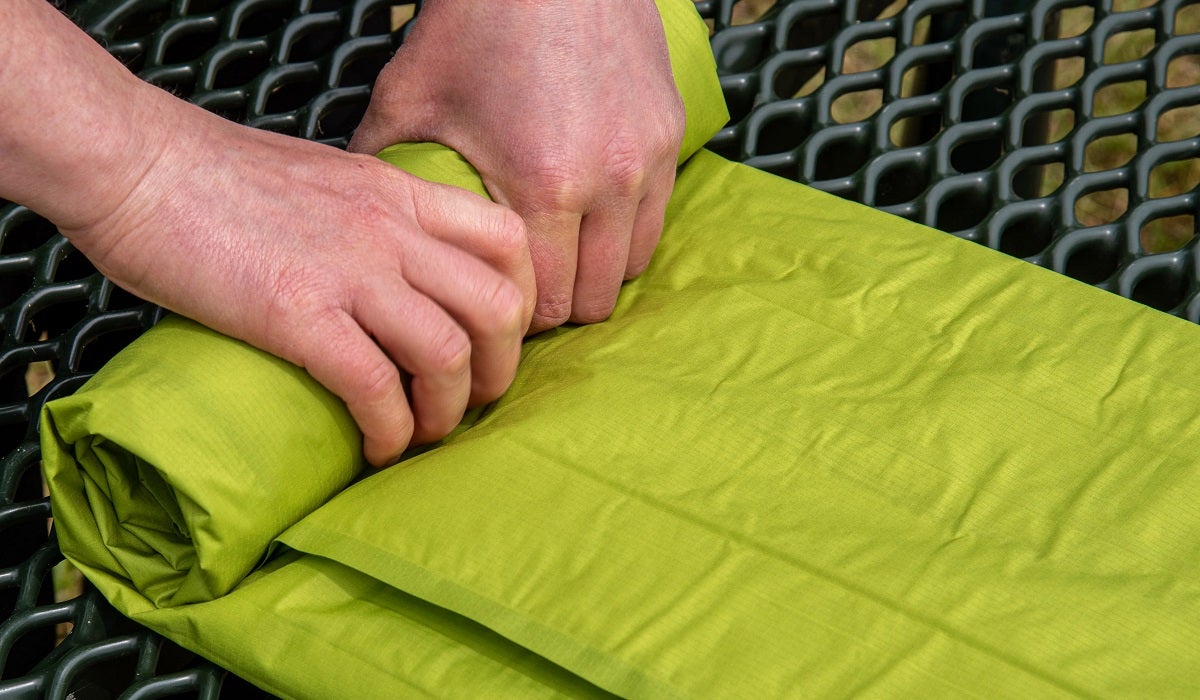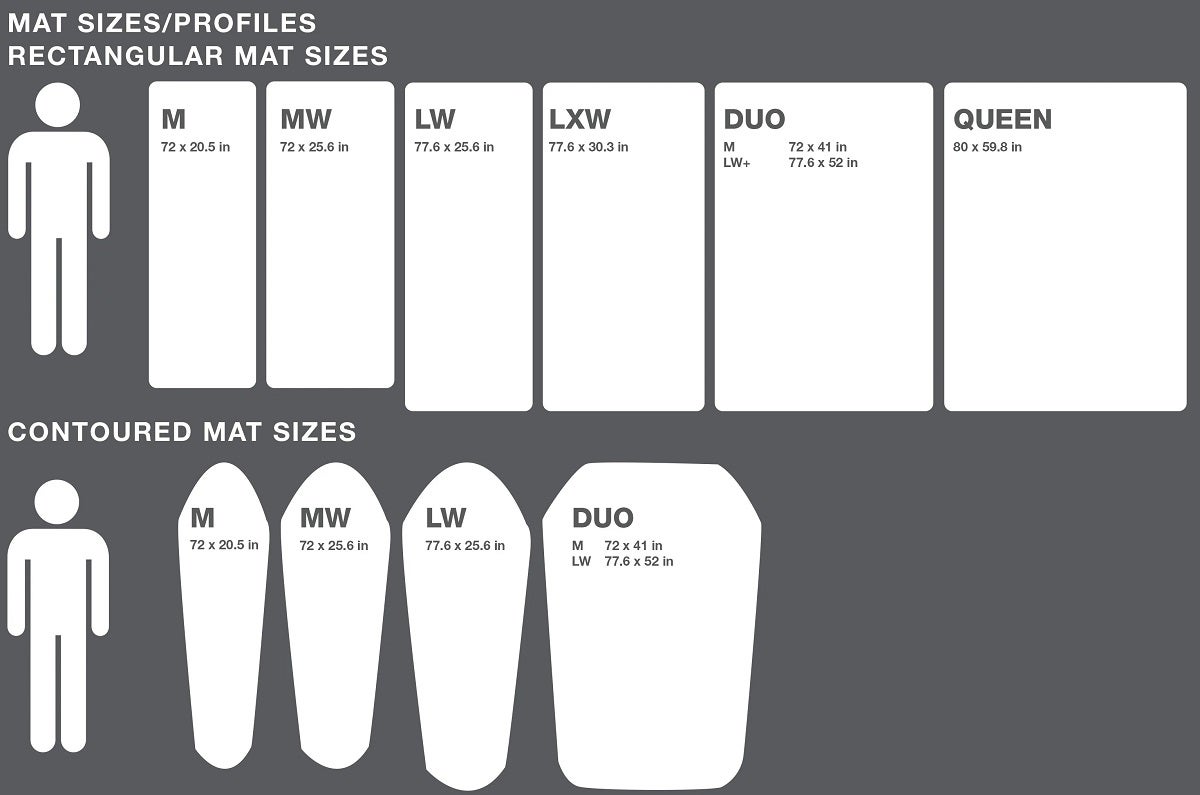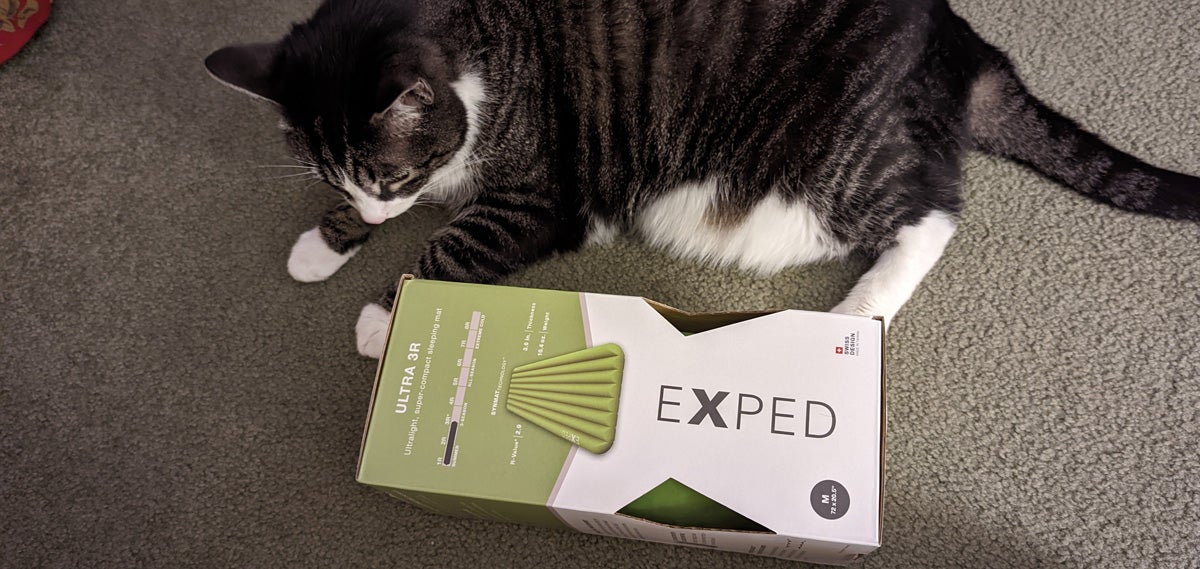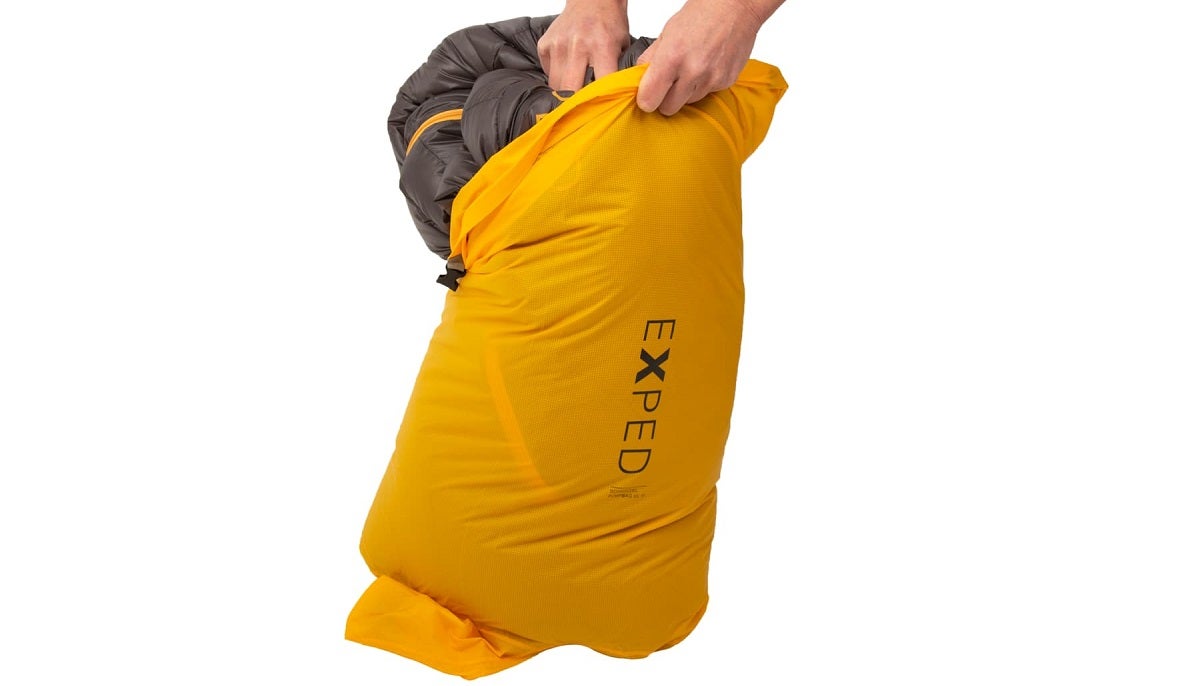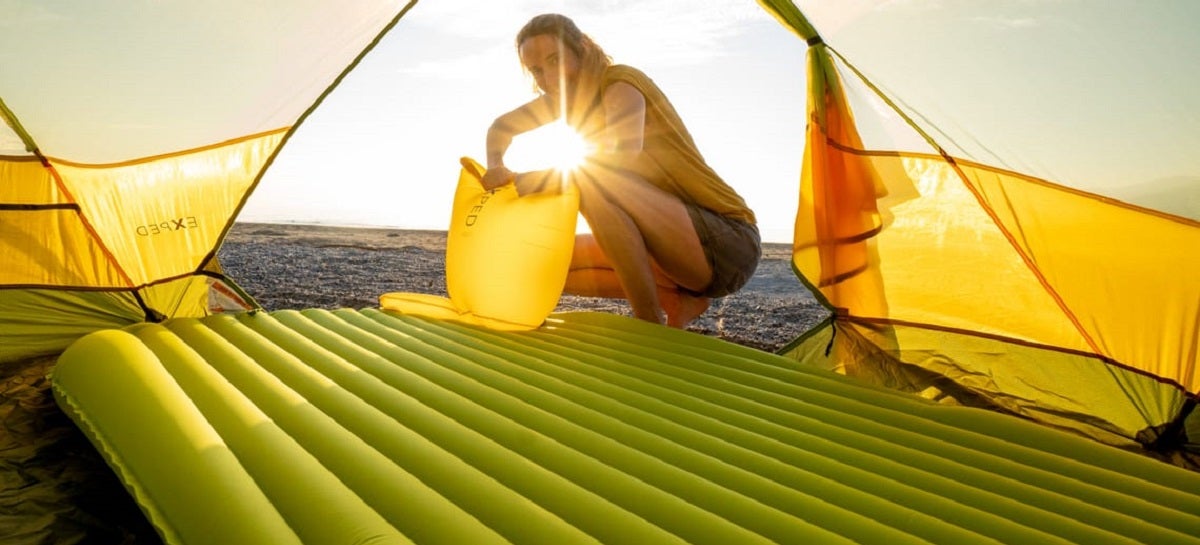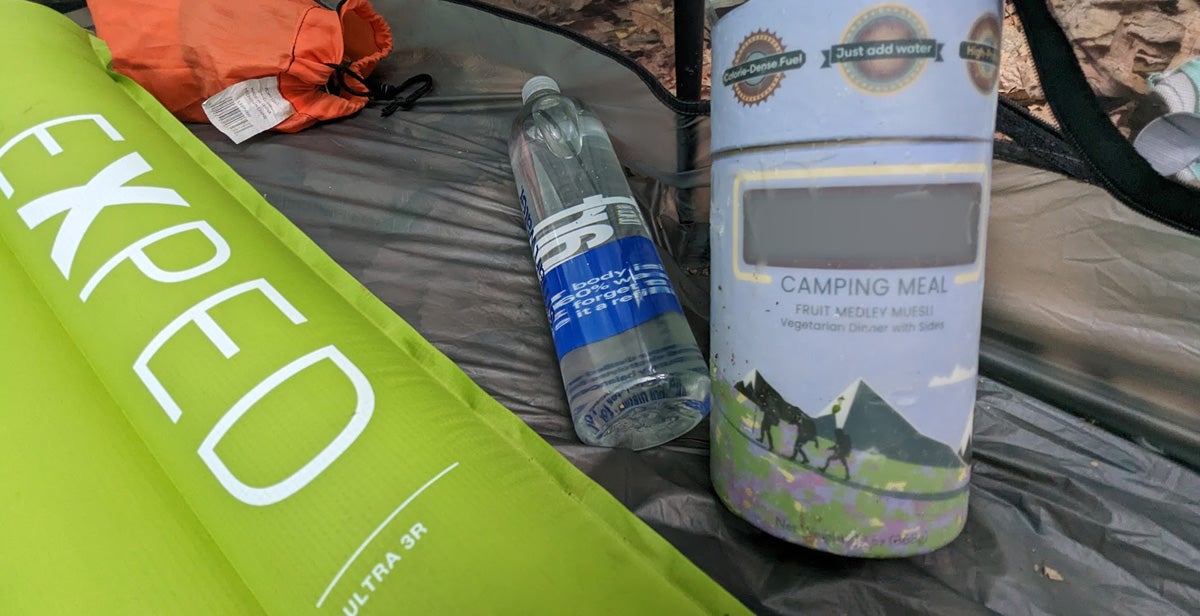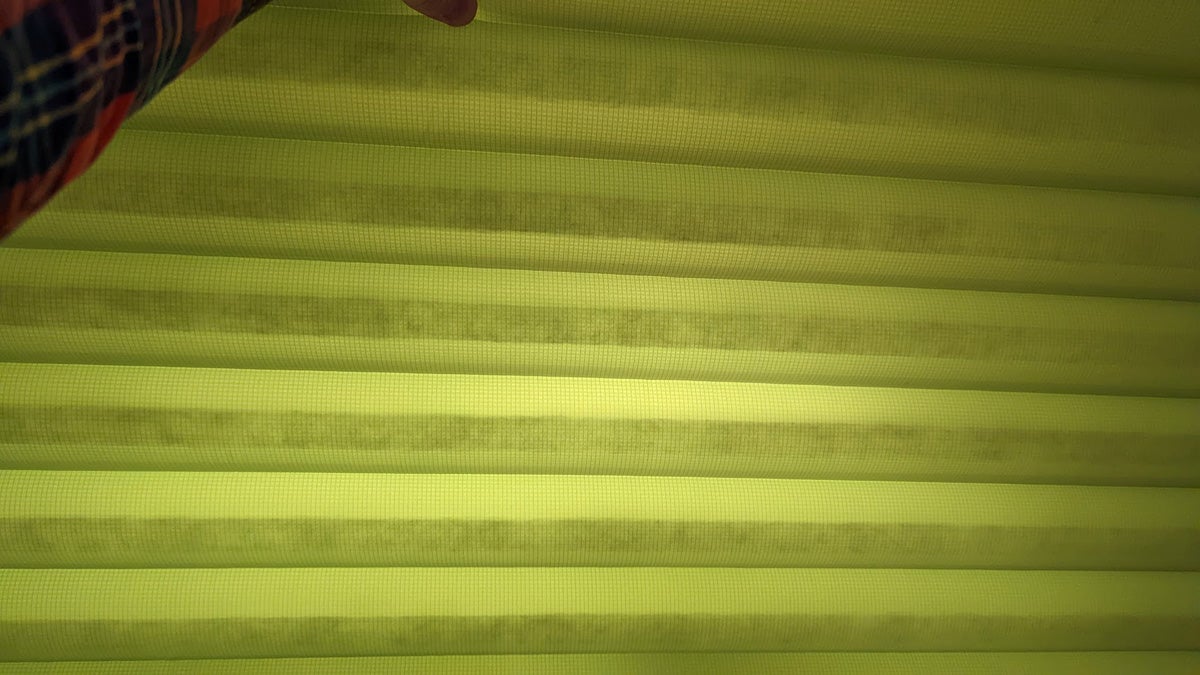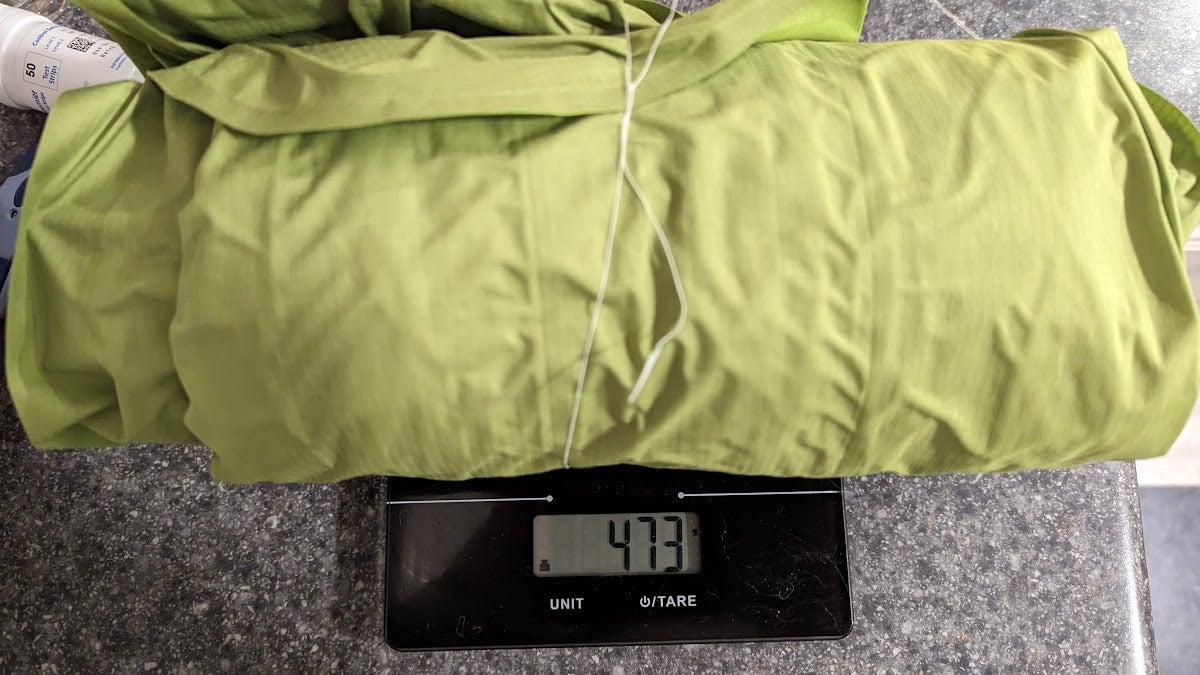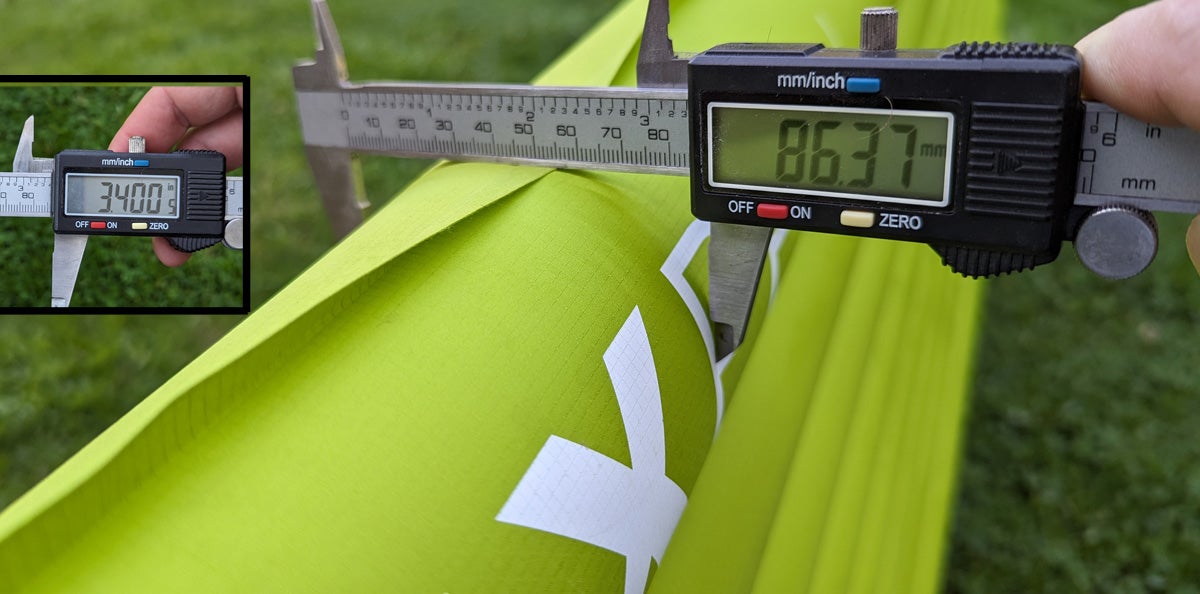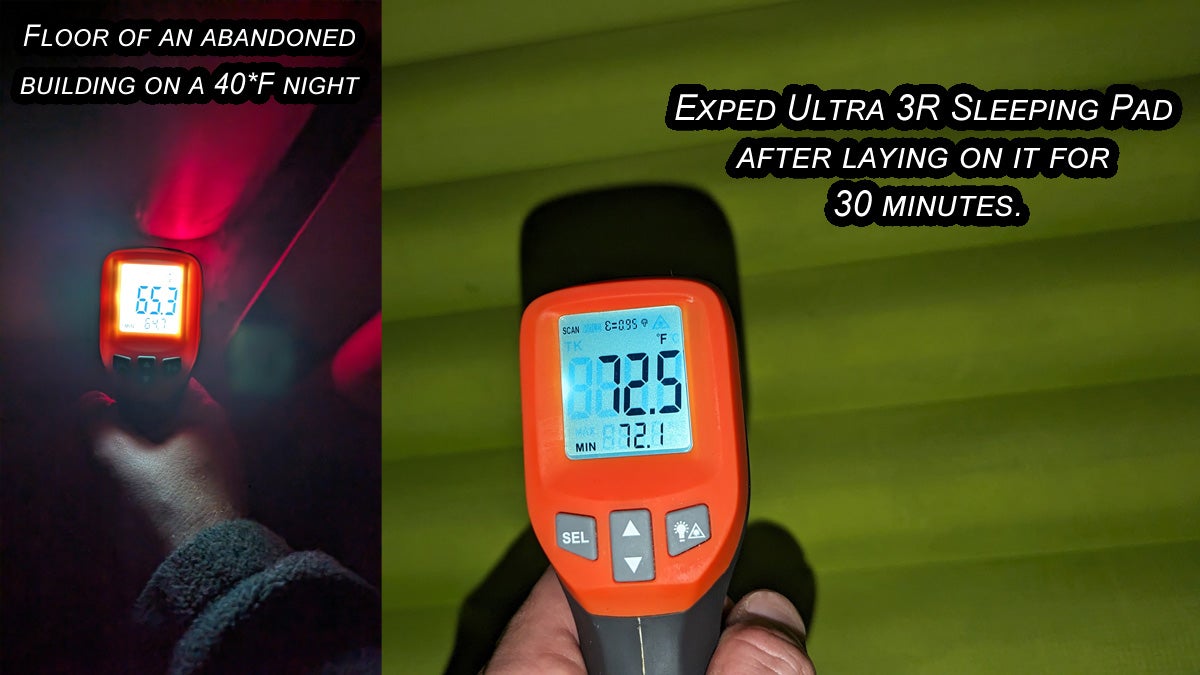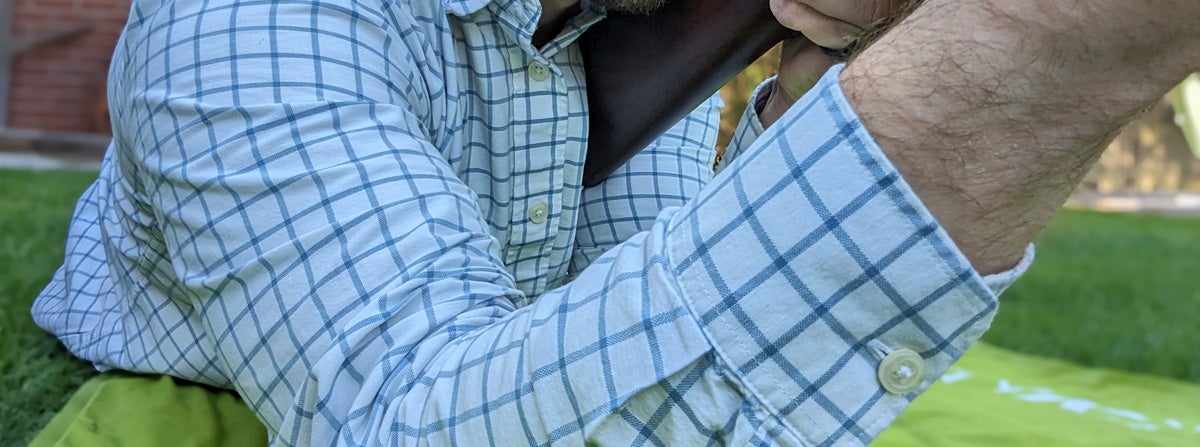The Path Less Traveled #079 – Exped Insulated Ultra 3R Sleeping Pad
Andrew D 08.28.23

The Exped Insulated Ultra 3R Sleeping Pad changed the way I camp.
Exped is known for the whole cornucopia of backpacking and sleeping gear, like insulated sleeping pads, backpacks, and even tents; the whole shebang really. Last year, Exped sent me their Exped Ultra 3R Sleeping Pad Mat. They call it a sleeping mat, I’ll be calling it a sleeping pad for the rest of this article.
Anyways, after nearly a full year (September 2022 – August 2023), I have found myself bringing this insulated pad more and more, even on hikes where the ambient temperature didn’t drop below 65*F (18.3 C). By using it on days where I’d likely just bring my Z-Fold, or a generic no-name inflatable sleeping pad, I noticed I could run a sleeping bag with less fill as the pad protected me from mother earth stealing my warmth. There were a bunch more neat features I’ll cover, so keep reading!
About to head out on the trail (or toilet at work)? Bring some reading material!
- Pull Start Fire – Lightweight Firestarter for Any Weather
- ALPS Mountaineering Releases NEW Alliance Trekking Poles
- The New 2024 NEMO 100% Recyclable “Endless Promise” Collection
Company Info: Exped AG / Exped USA
Back in ’83, husband and wife Heidi & Andi Brun started Exped AG in Zurich Switzerland. By 1997 Exped began dipping their toes into the product game themselves, shifting from middlemen to makers. Do note, Exped LLC in Tacoma, Washington continued to distribute for other brands in America up to 2009 (that I can find), and still distribute some brands into Europe.
Heidi and Andi Brun – they’re the brains behind this. They set off on a wild journey frim 1980 to 1982’ish, building a cabin in Canada’s wilderness with just hand tools. Bears, survival mode, all that jazz. No regrets though, they say, it’s all about nature’s solitude. Fast forward to today, Exped spans 26 countries and is continuing to innovate to ensure outdoors folk thrive, not survive by providing comfort anywhere.

Product Info – Exped Ultra 3R Sleeping Pad
I think Exped is a little more well known in Europe than the US, although I have seen an ever growing presence over the past couple years. The big thing about their sleeping pads are that they are pretty puncture resistant and don’t sound like you’re sleeping on crinkly aluminum foil any time you move.
Environmental AF! At No Cost to Quality
As professionals who love the outdoors as well as wanting to keep people and the planet as healthy as possible, the Ultra series is PFC free, made from recycled materials, bluesign certified, and carries the OEKO-TEX STANDARD 100 label. I had to look the Oeko-tex one up, it means every component this product is made of has been tested for harmful substances and determined to be harmless for human health. Lastly, Exped manufactures their pads with Feng Yi, a Taiwanese company in Taichung City for over 20 years.
Insulation
Insulation is a big deal. It does all the same things that forbidden pink panther cotton candy up in your attic does. The Ultra 3R uses 60 g/m³ texpedloft microfibers with an R-Value of 2.9.
I can’t find any data about “texpedloft” online, but I did see some demo pad units with windows that allowed me to see what the down in their Ultra 3R & 5R as well as the down in their Ultra 7R pads looked like.
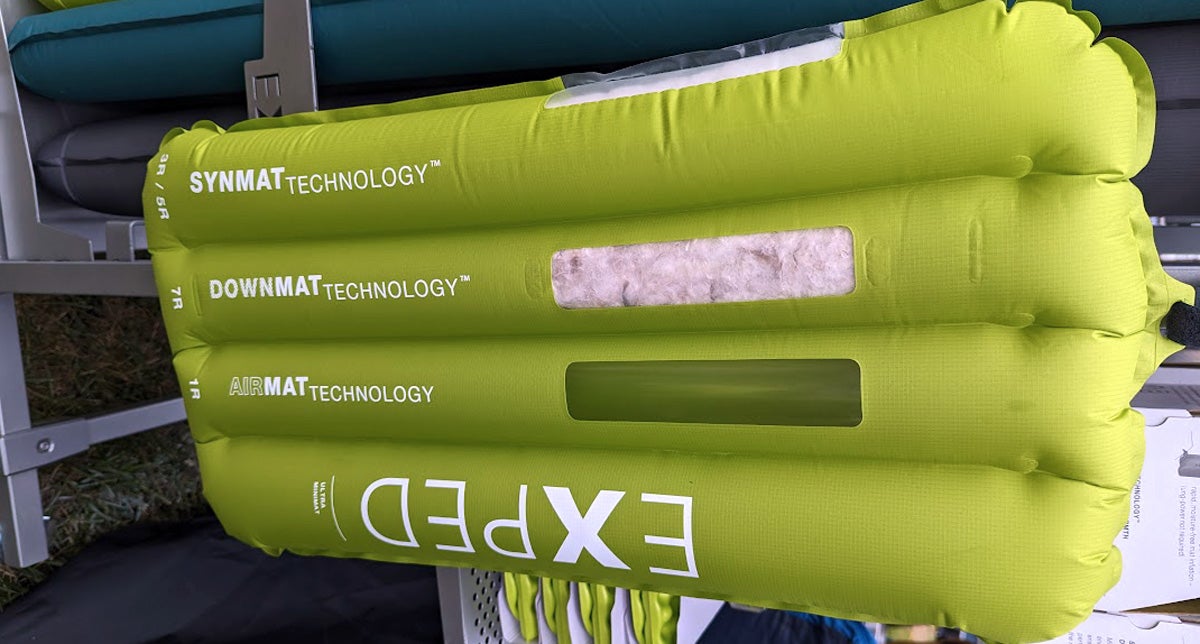
Somehow Exped welded the fibers that make up the synpad to the top and bottom walls of the pad, so when air expands, the insulating fibers also expand and help keep cold away from your body.
Sizing & Weight
The Ultra 3R is the lightest insulated pad Exped makes, and comes in at a little over a pound – 465 g to be exact (16.4 oz). With the Airpad 1R weighing 394g (13.9 oz), this means roughly 71g (2.5 oz) of weight comes from the insulation.
The 3R comes in several sizes you can see on this neat sizing chart. As the Medium 3R I have is a Medium, it is 72 inches long, 20.5 inches wide.
Exped states the packed dimension of the pad is 10.6 x 5.1 inches, but more on this below…
The pad is rated for 20*F / -6*C temperatures.
Schnozzle Pump Bag
The Schnozzle Pump Bag UL (Medium) weighs 59 g (2.1 oz), and functions as more than just a pump bag… with a 45L capacity it could technically be a lot of people’s main drybag, especially being made from the same 20D PU coated ripstop the sleeping pad is made from. It has a buckle on top to keep the roll-top closure closed.
Using the pump system keeps the inside of your bag moisture free, as condensation in your breath will mess up the insulation over time and possibly even cause mildew or moldy stuff to develop. The gigantic air capacity of the pump bag can easily fill the pad in three squeezes.
Observations
In the past fourteen years that I’ve taken backpacking and/or bike packing seriously, I always defaulted to having a foam pad in addition to a really shitty Aliexpress inflatable pad sold by a brand that had as many vowels as it did consonants in the name; ex: LIIUGHISIE / COUNTRYPLOD, etc. When some no-name pad lying to be 180 grams for a mummy shape and only costing $18.99, it’s tough to get away from them despite most having like… two inches of loft and less durability and/or puncture resistance than that Durex which led to your unexpected third kid.
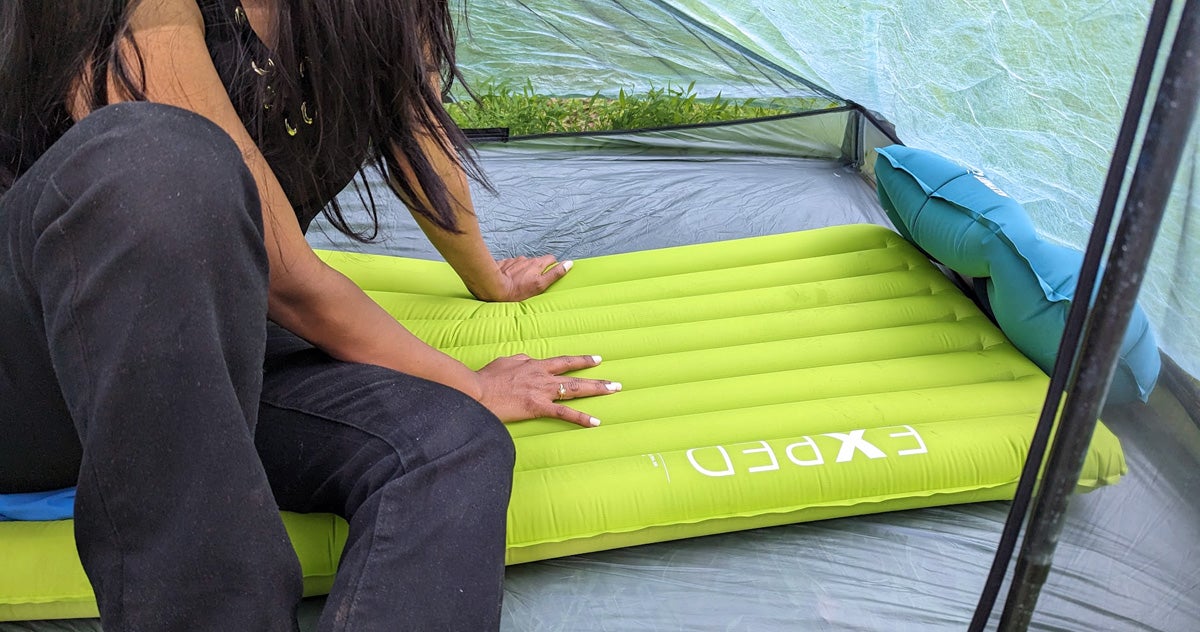
Yeah, they were unreliable, light weight, and cheap, but when bringing a Z Fold sleeping pad anyways, what’s the point in having something that’ll burst quicker than one of the captains on those Ice Road Shrimp Gold Panning Trucker shows? From September 26, 2022 to August 10, 2023, I used the Ultra 3R on 34 nights. Initially, I was hesitant to let go of bringing my Z Fold pad with me, as sleeping on the ground sucks, and it steals more heat from your body than that cuddle bug during movie night. After the third night of the first trip I went on in Fayetteville, WV, I decided to retire the foam pad and just bring the Exped.
The foam pad and cheapo inflatable pad I used before were about 10L of space, and 800g or so (28.2 oz). Just by taking this one pad, I had saved nearly 8.8L of volume (despite it being on the outside of my pack, or being used as my pack frame) and 333g (11.7 oz). That’s a whole meal, or even like a 20,000 maH portable battery. The possibilities were endless.
Don’t know about you, but I only have two sleeping bags and deal with the consequences. Just because I write and review things doesn’t mean I’m like that one creepy hiking youtuber with the ballcap that reviews ten sleeping pads in the same video, etc. Space is a premium, as is price. For my two sleeping bags, I have a down 20*F bag and a down 35*F bag. I used to have a cheapy down bag that could only do summer hikes, but it got binned for space saving.
After three days in Fayeteville, three days at Cuyahoga Falls, and one winter trip that ended up with us sleeping in an abandoned warehouse due to 10″ of snowfall, I started noticing not really wanting to stay all the way in my sleeping bag once the weather broke 50*F at night.
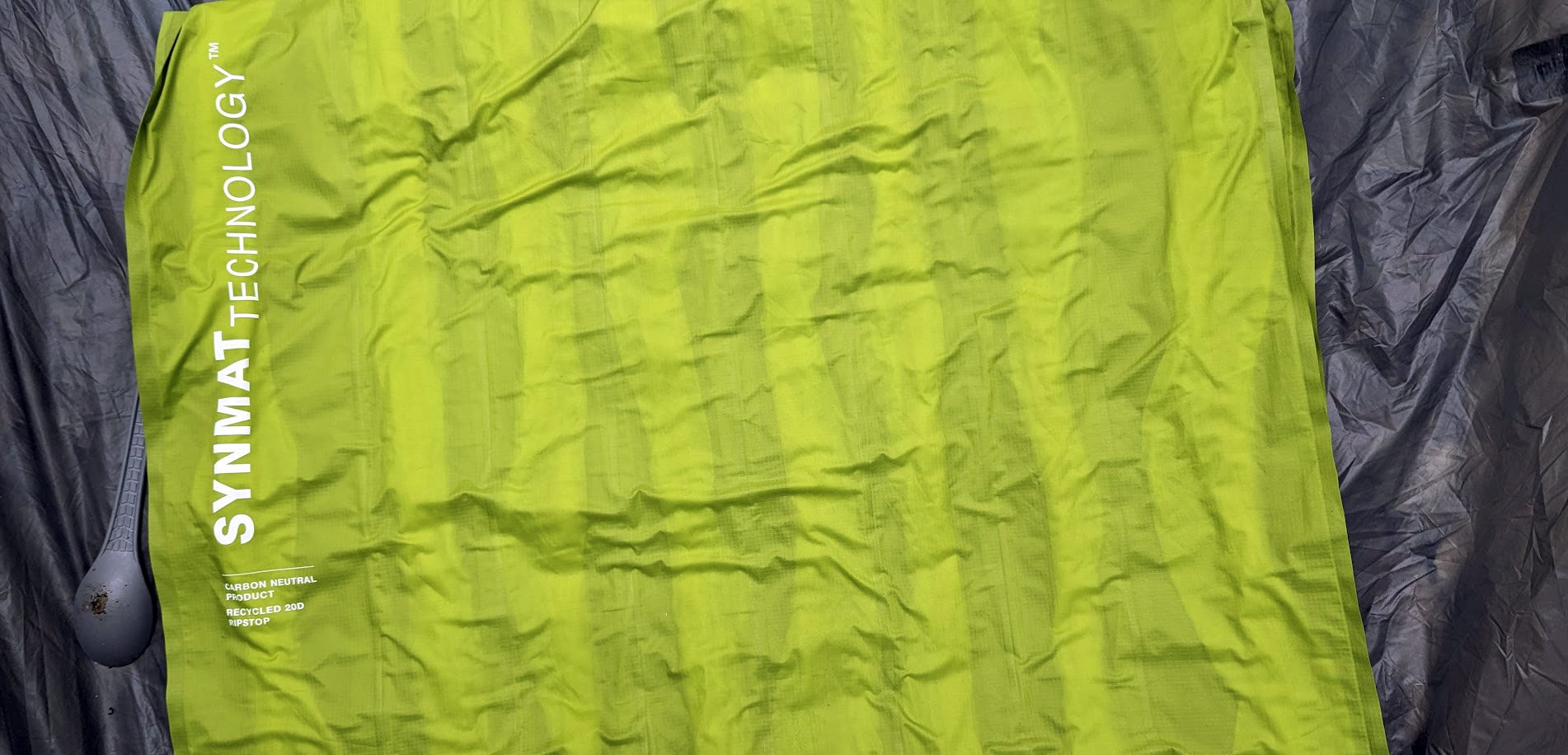
By that time, I bought a thin, stretchy bag liner that rolled up to about the size of the Exped sleeping pad, but only weighed 343g (12.1 oz) instead of my typical 850g (1lb 14oz) down bag. Once again, I had the option to drop 500g (17.6 oz) when the weather permitted! In total, this was 833g (29.3 oz) off my summer pack weight. That means carrying a second water bottle and stopping less to refill, or not even bringing a water filtration kit on overnights!
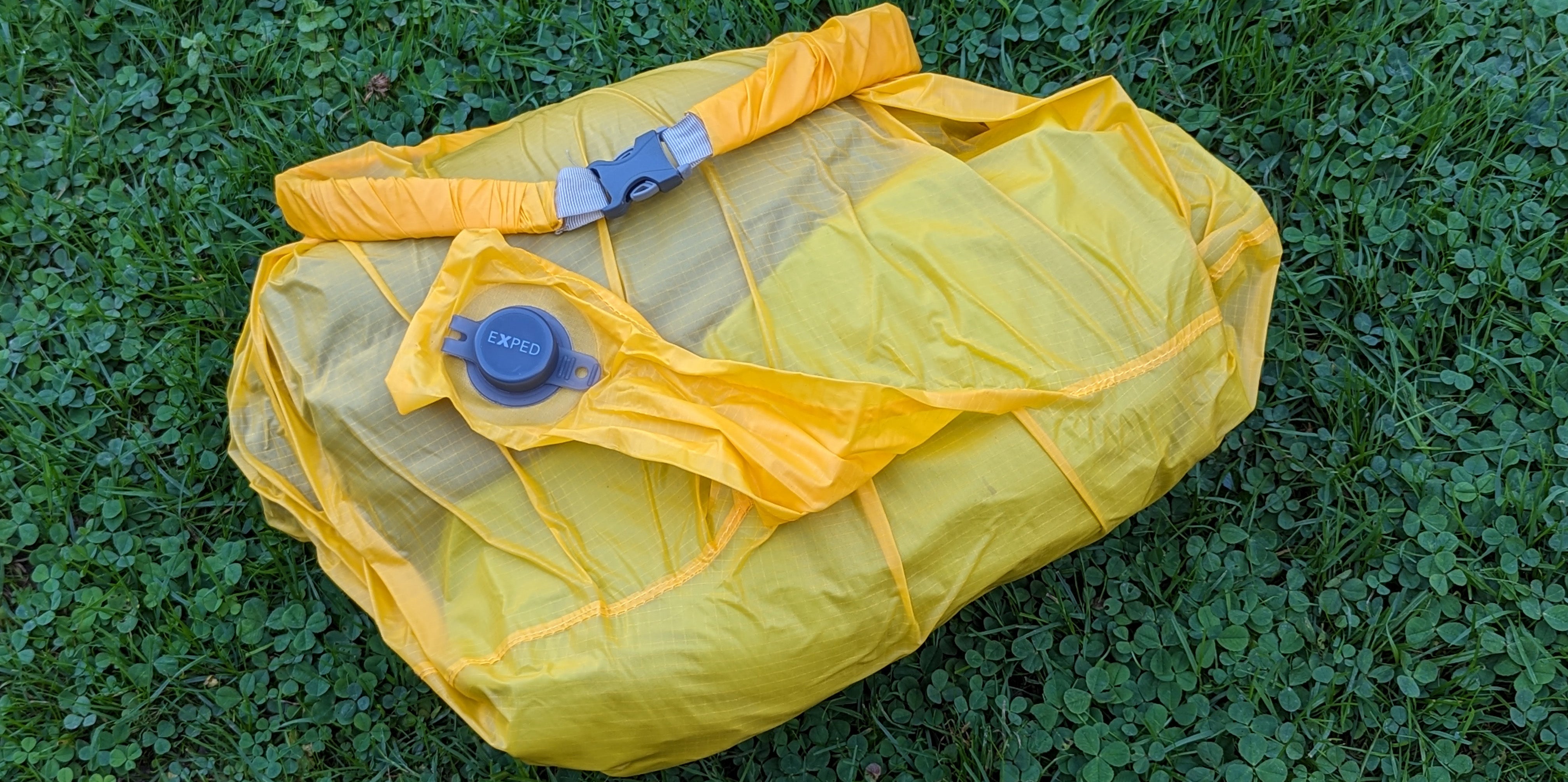
When you have 30 ounces taken off your pack weight, another three or four miles don’t sound so bad.
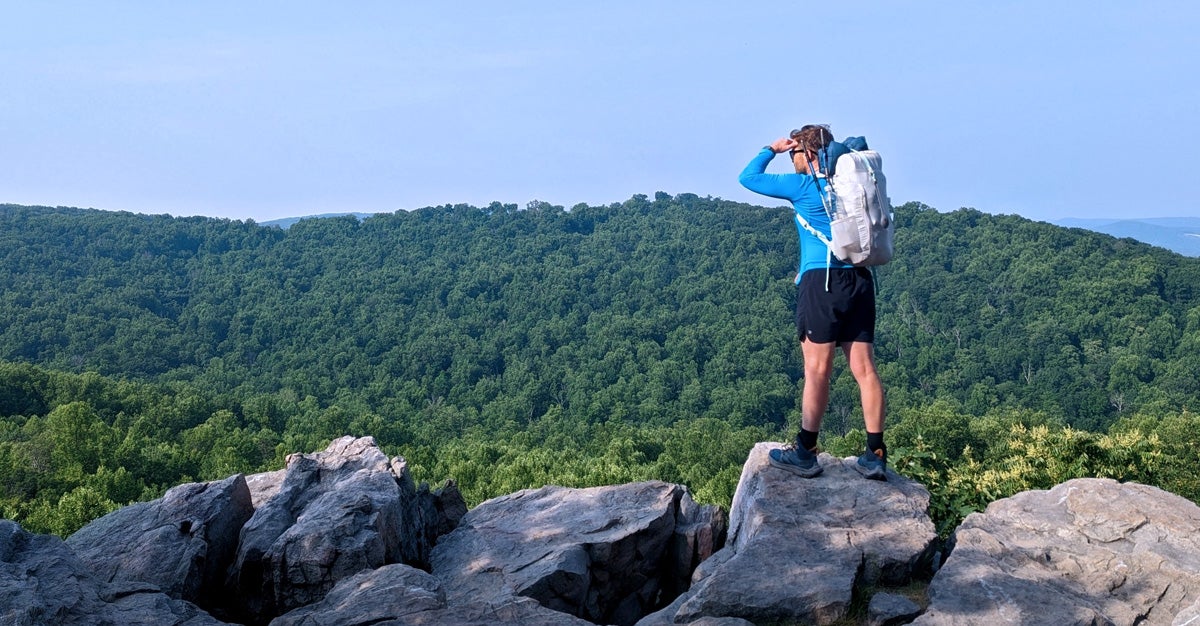
Talking about Weight…
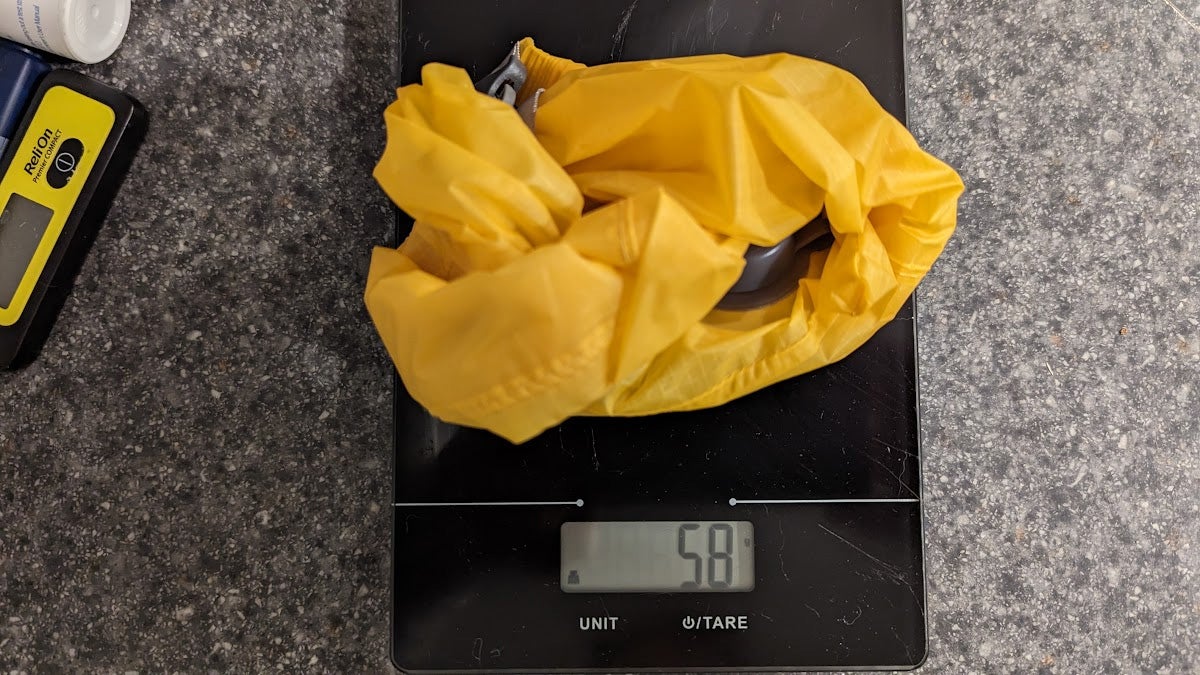
The sleeping pad’s advertised weight was 465g, and the pump bag hitting the scales at a scant 51g. We’re 15g above indicated weight, 2.09% over listed weights – I’m impressed. Hopefully the 8g in the pad is insulation!
I thought you said it was bigger?
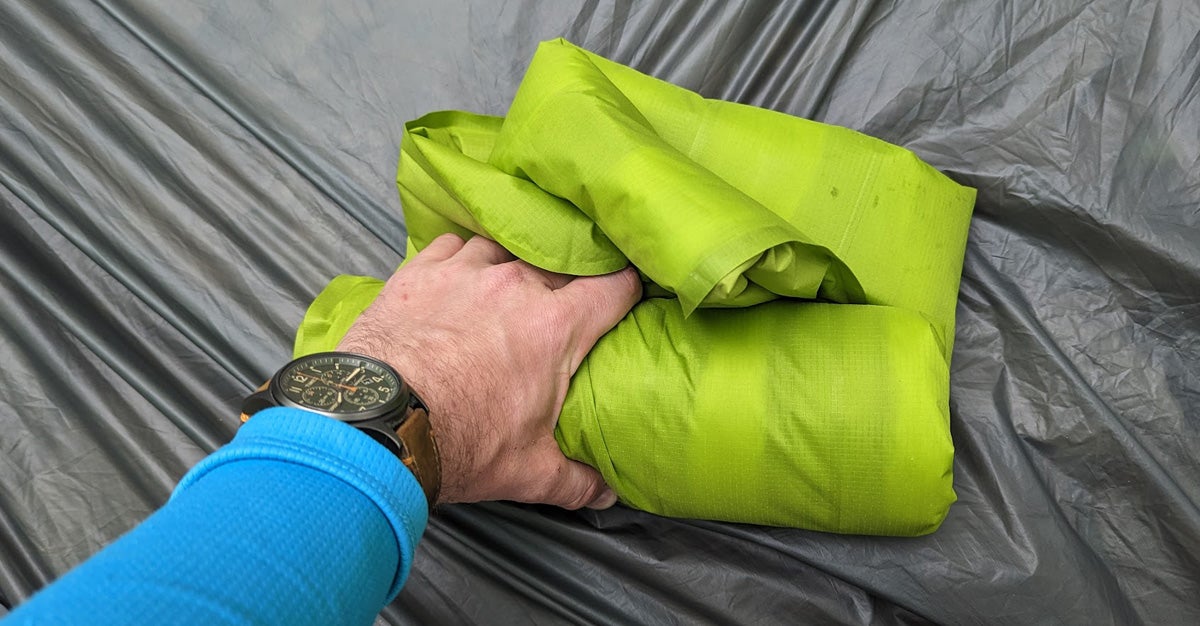
The Ultra 3R packs down small. Advertised size is a cylinder with 10.6″ L x 5.1″ D. Maybe I’m really good at packing things as my pad came in at about 8.5″ L x 3.5″ D when I really tried to save space.
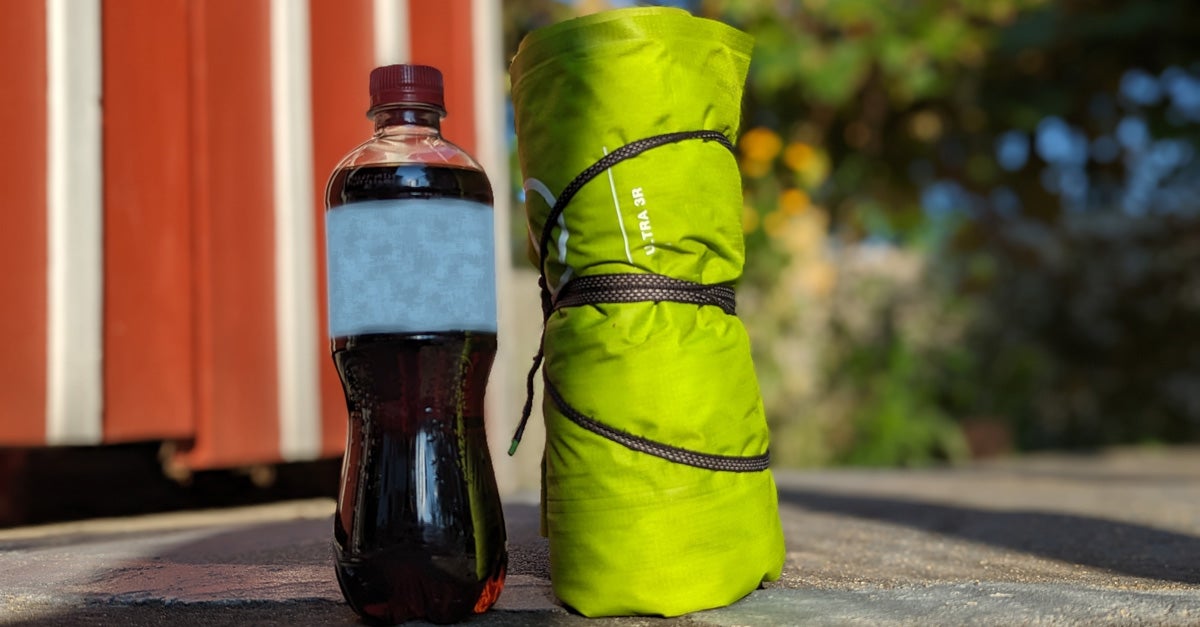
But how does it feel?
In a year, I’ve spent over a month of nights on this thing, and regretted none of them. Well, there was that one night at Appalachian Trail Days where I had a few too many, got baked by the sun because of antibiotics (Who knew?!), and Hyperlight Mountain Gear was playing bluegrass at 6am. I regretted that morning, but not because of Exped’s sleeping pad.
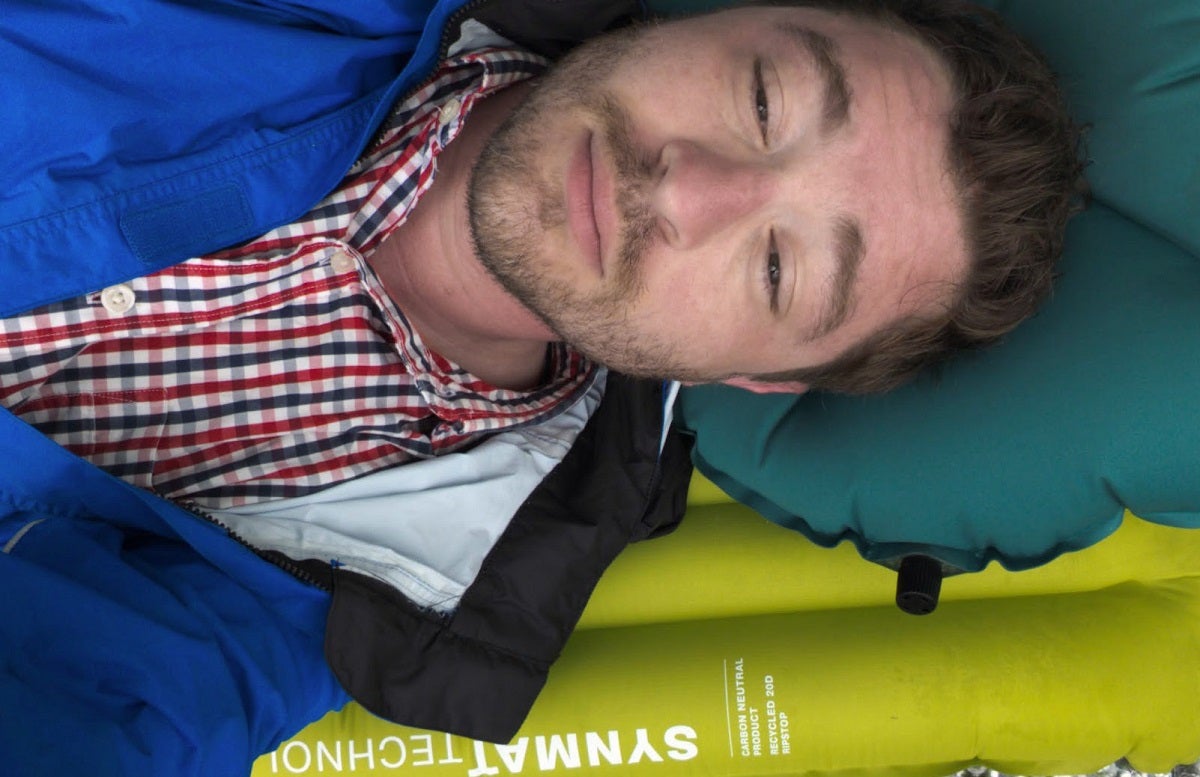
The pad is thicker than advertised. While Exped states it is 70mm (2.76 in) thick, my handy dandy micrometer registered it at 86mm (3.4 in). Wasn’t overinflated as it still was 20.5 wide once full. Who knows? Either way, I enjoyed the comfort.
Best of all, it doesn’t crinkle like one of my old pads from another company did. Have you ever accidentally had a wrapper in your pocket while in your tent sleeping? Imagine a whole chip bag instead! The Exped’s synmat technology is quiet and lofty. The sleeping pad doesn’t have any silicone traction lines or retention strap holes built in, but I move around so much at night that I can’t say if the pad stayed under me or not… I’m seriously a rotisserie chicken on some nights. With that said, there were more nights than not where I was still on the pad when I woke up to pee or have morning coffee.
Remember I said a few friends and I ended up sleeping in an abandoned warehouse because of unexpected snowfall? Well, I also had my pizza oven thermometer with me and took readings of the floor my tent was on, as well as the sleeping pad after a while of laying on it.
I’m not forklift of HVAC certified, but I do know that more insulation (R-Value) is typically a good thing when wanting to stay warm. Having a seven degree difference between what my body was laying on and the ground my tent was on is a win in my book. Pretty sure someone in the comments could tell me how much heat the floor could pull from me, or how many calories I would need to burn to stay warm at 65*F versus 72*F. Those numbers are beyond me.
Oh, did I say this sleeping pad has a five year warranty? While not a lifetime, that’s still impressive.
In Summary, I put this pad through some good effort and it came out just as good as when it started:
- The Exped Ultra 3R sleeping pad taught me that good things aren’t cheap, but they’ll treat you better than the cheap things do.
- Insulation kept me warm enough to pack less clothes and a lighter sleeping bag.
- The 2.7 inch advertised height is closer to 3 and some change, never had an issue with leaking or overnight deflation. I kept it inflated and propped against the wall for 11 days without seeing the pad sag or show signs of going flaccid.
- Having a sleeping pad that doesn’t squeak like a wet shoe, or crinkle like a potato chip bag is a very wonderful thing after 15 miles in one day.
- $159 feels like a lot of dough to throw at a sleeping pad, but if you can drop a pound by carrying a lighter sleeping bag or quilt, the added weight of the insulation is likely worth it.
- It took me forever to figure out how to get the pad completely deflated. Luckily the guy at Trail Days just recommended a wringing-crumpling motion rather than a fold and press motion. The first two trips I took the Ultra 3R on, it ended up getting strapped to the top of my backpack’s exterior because my fold method didn’t get enough air out to go in the bag. Lesson learned.
- Pump bags are a need, not a want. Being able to pump up a pad in less than a minute without testing your VO2 MAX is so worth it:

3.75 out of 4 Stars
I’d give it 4, but I’m too miserly to say $159 is a great price, but all competitors are also in this price range, not including varying reputations.
Specifications: Exped Ultra 3R Sleeping Mat Pad
As per Exped’s Website:
R-Value: 2.9
Temperature: −5° C / 20 °F
| Size | Dimensions | Weight | Packed |
| M | 72 x 20.5 x 3 in | 16.4 oz | 9.1 x 4.3 in |
| MW | 72 x 25.6 x 3 in | 18.3 oz | 10.6 x 4.5 in |
| LW | 77.6 x 25.6 x 3 in | 19.8 oz | 10.6 x 4.7 in |
Materials
Fabric
Recycled 20D ripstop polyester, Oeko-Tex® 100 certified
Insulation
60 g/m2 Texpedloft microfiber, bluesign® certified
- Ultra-lightweight, compact and supportive sleeping mat for when low weight and small packed size are critical. Insulated for 3-season use.
- SYNMAT TECHNOLOGY™ – 60 g/m2 Texpedloft insulation welded to the top and bottom of the air chambers ensures maximum warmth over the lifetime of the mat.
- Recycled 20 D ripstop polyester is 3x stronger and uses less carbon, energy and water.
- Airtight, durable and hydrolysis-resistant fabric lamination.
- Welded baffles separate air chambers, create a cushioned and stable sleep surface and prevent cold spots.
- EXPED FLATVALVE – Pioneered by EXPED. Large FlatValves provide industry-leading durability, reliability and intuitive performance for rapid inflation and deflation.
- COMFORT CRADLE – Air chambers run head-to-toe, fully supporting the body for an unrivaled night’s sleep and increased durability. EXPED’s comfort cradle side rails center and secure the sleeper on the mat.
- Schnozzel pumpbag included for rapid, moisture-free mat inflation; doubles as waterproof compression bag.
- Rectangular design maximizes sleep surface and warmth, while the tapered design (head to foot) saves weight and and reduces bulk when packed.
- CARBON NEUTRAL – EXPED measures, reduces and fully offsets CO2 from manufacturing and shipping this product.
- Contents: Mat, schnozzel pumpbag, repair kit with glue and adhesive patches, stuff sack
Exped Social Media
- Official Site (USA): https://www.expedusa.com/
- Officially Inspected Used Gear: https://www.expedusa.com/collections/used-gear
- Closeouts: https://www.expedusa.com/collections/sale
- Twitter: ExpedInt
- Facebook: ExpedINT
- Instagram: ExpedUSA
- Youtube: ExpedLLC
- LinkedIn: ExpedUSA
The opinions expressed above are entirely from the author and weren’t subject to review by Exped AG / Exped LLC, or any external entity.
Come join Alloutdoor’s Discord server and chat about Archery, Firearms, Fishing and other topics with others! Sneak peaks, early notifications, and perks await. We have a Tiktok account, too! (While it lasts)

